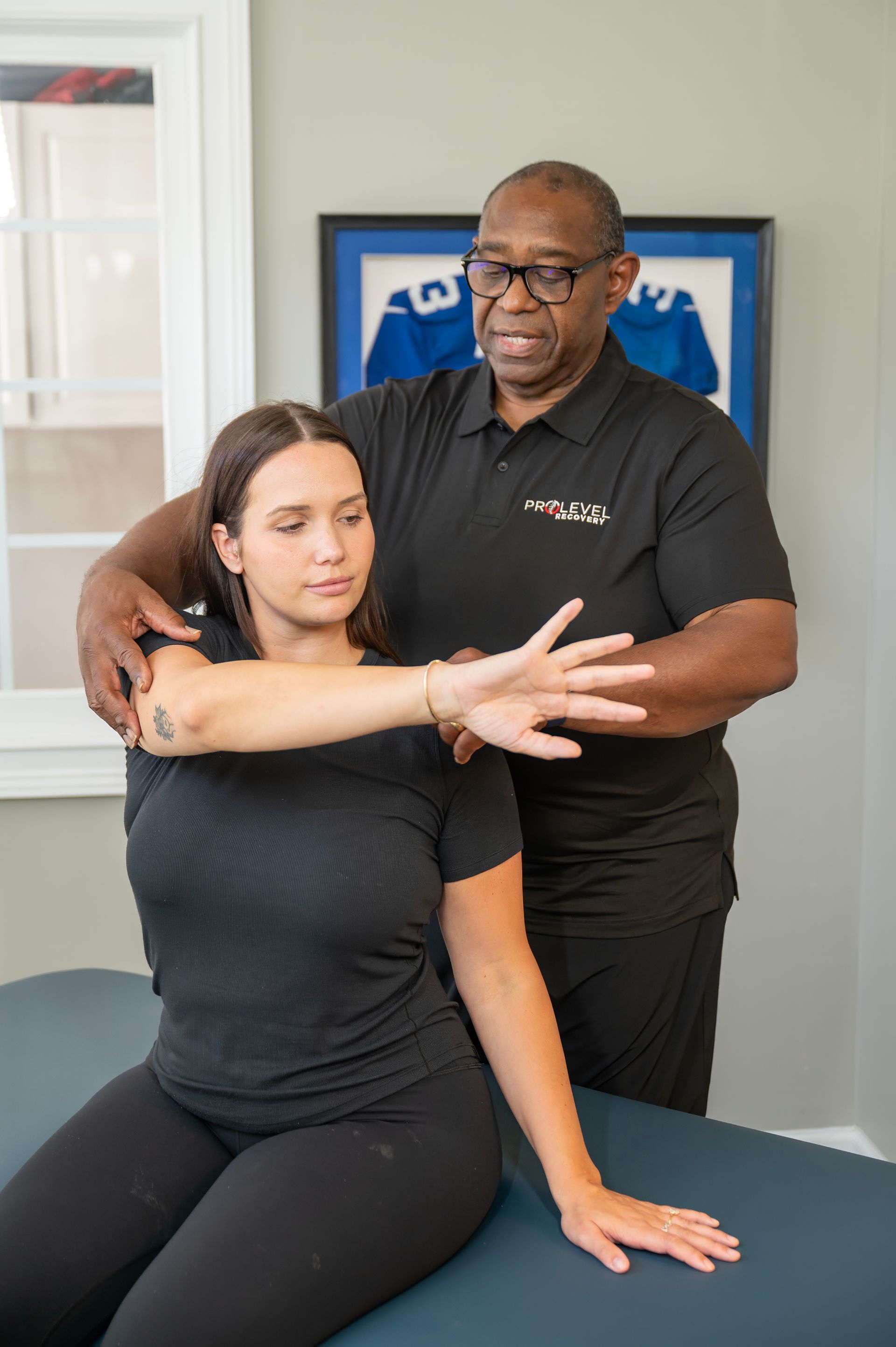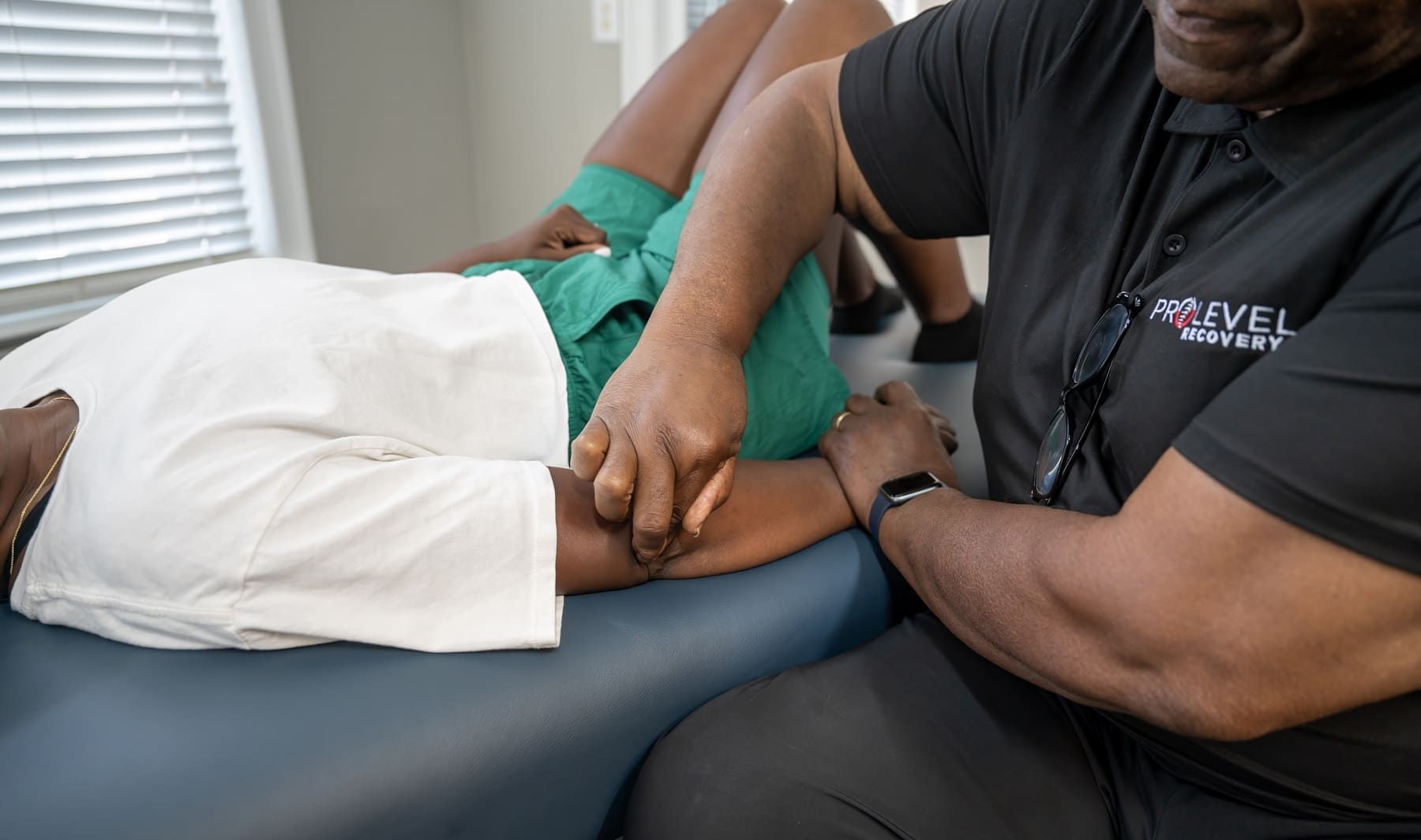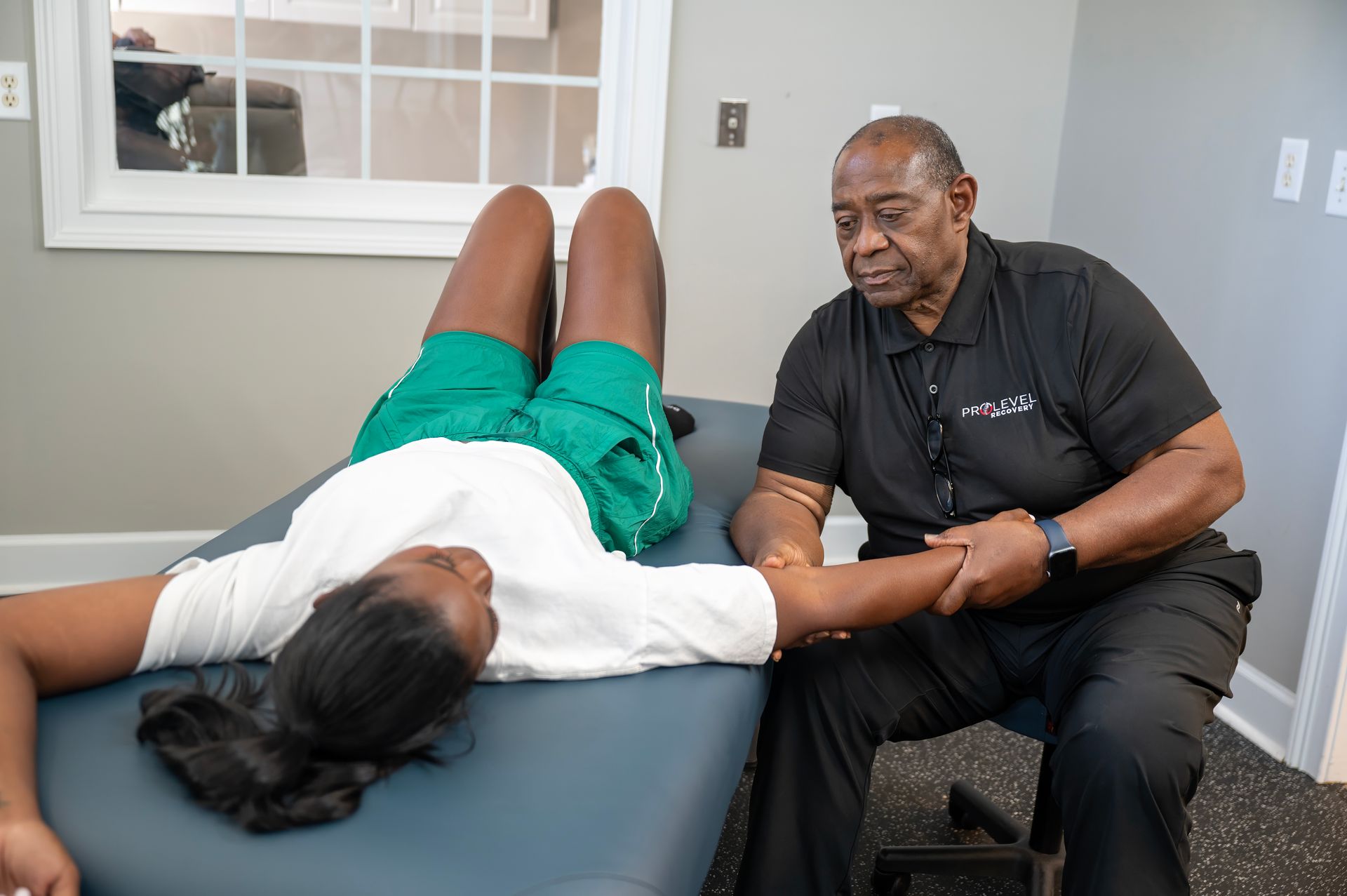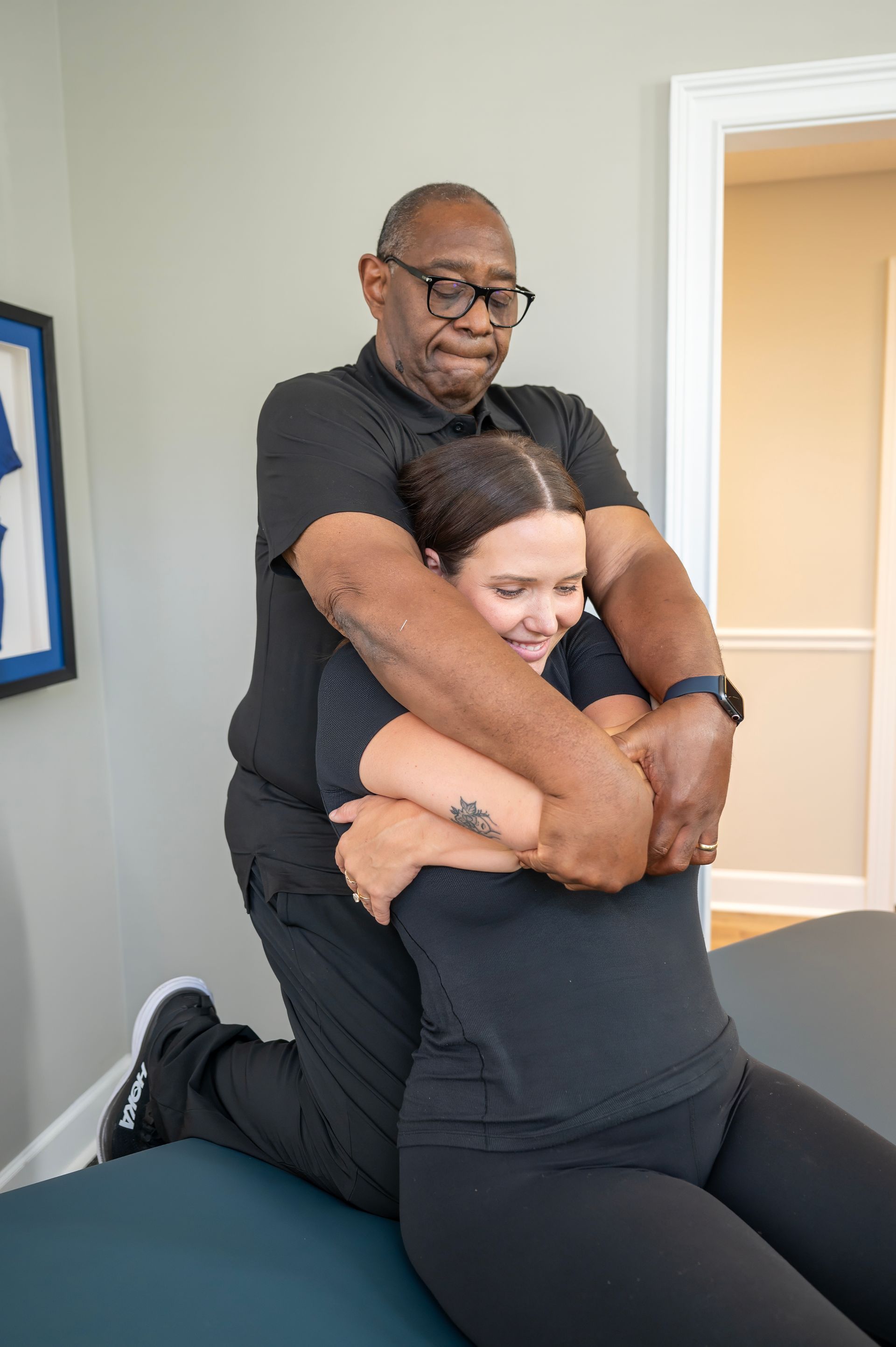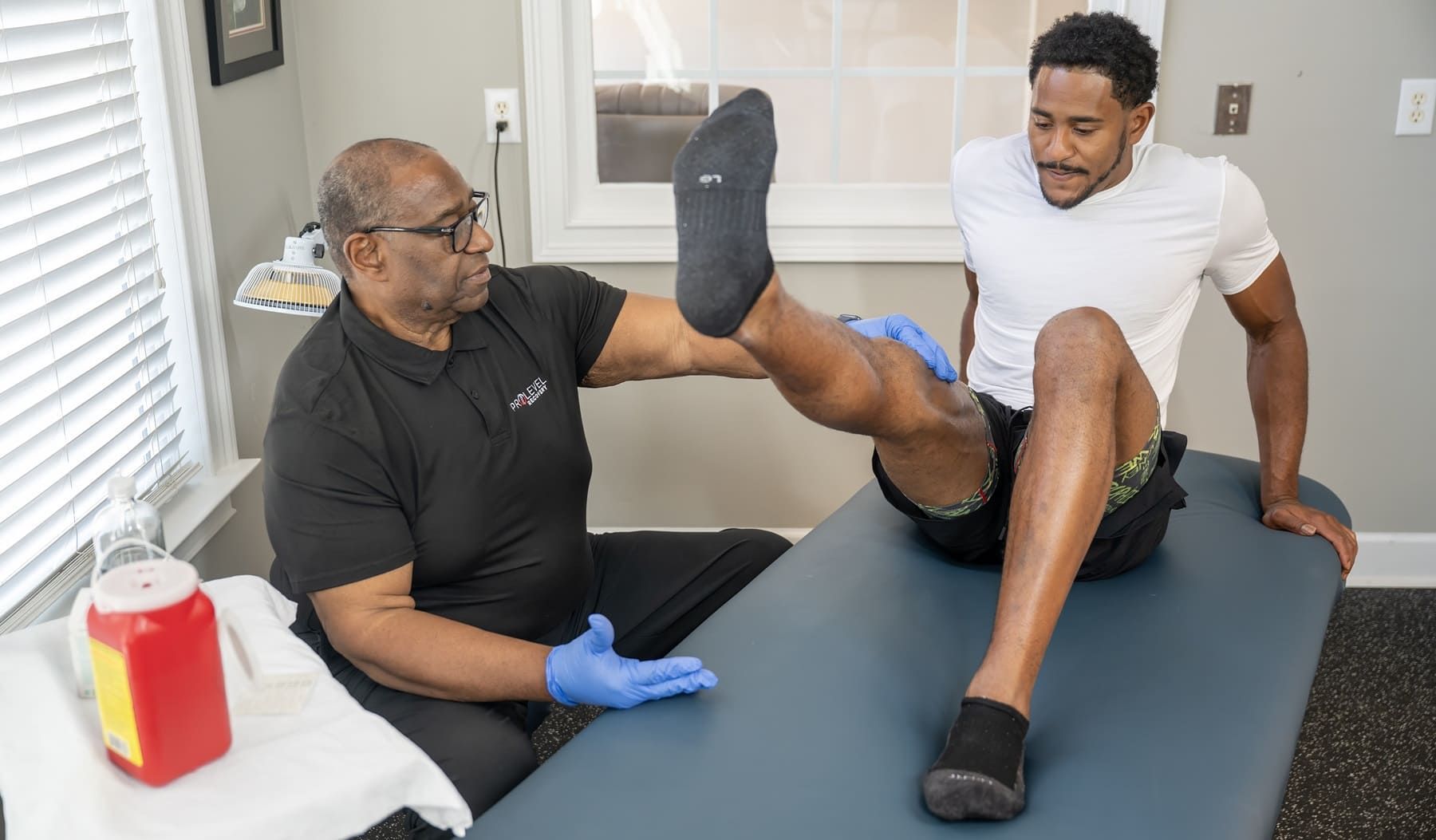Manual Therapy
Begin Your Path to Wellness Today: Expert Manual Therapy for Fayetteville, Fayette County, and Atlanta Areas
Understanding Manual Therapy: Benefits, Types, and Useful Cases
Manual therapy is a hands-on treatment approach designed to alleviate pain, improve mobility, and promote healing in individuals with musculoskeletal conditions. This specialized form of therapy is performed by trained professionals, such as physical therapists and chiropractors, who utilize various techniques to address specific issues.
What is Manual Therapy?
Manual therapy involves a range of physical techniques applied directly by trained practitioners to treat musculoskeletal pain and dysfunction. The primary goal is to improve movement, reduce pain, and enhance overall physical function through hands-on methods. These techniques include joint mobilization, spinal manipulation, and soft tissue massage, each tailored to address specific issues and promote healing.
Types of Manual Therapy Techniques
Our manual therapy services include a variety of techniques designed to address different physical issues:
- Joint Mobilization: Gentle, controlled movements applied to joints to improve range of motion and reduce pain.
- Spinal Manipulation: Adjustments to the spine aimed at alleviating back pain and enhancing spinal function.
- Soft Tissue Massage: Techniques used to relax muscles, improve blood flow, and reduce muscle tension.
- Myofascial Release: Focused pressure and stretching to release tightness in the fascia, the connective tissue surrounding muscles.
Useful Cases for Manual Therapy
Manual therapy is beneficial in a range of scenarios, including:
Chronic Pain Conditions
Effective for managing ongoing pain such as back pain, neck pain, and arthritis.
Post-Surgery Rehabilitation
Supports recovery and improves function following surgical procedures related to musculoskeletal issues.
Muscle Tension and Stiffness
Addresses issues related to muscle tightness, poor posture, and overall muscle discomfort.
Sports Injuries
Assists in the recovery process from sports-related injuries and enhances athletic performance.
Benefits of Manual Therapy
Manual therapy offers numerous benefits that contribute to improved health and well-being:
- Effective Pain Relief: Manual therapy techniques target the source of pain and alleviate discomfort, providing significant relief from musculoskeletal issues.
- Enhanced Mobility: Techniques such as joint mobilization help restore range of motion and flexibility, making it easier to perform daily activities and enjoy a more active lifestyle.
- Improved Physical Function: By addressing pain and dysfunction, manual therapy supports better overall physical performance and function.
- Reduced Muscle Tension: Soft tissue massage and other techniques relieve muscle stiffness, improve circulation, and reduce tension.
- Personalized Treatment: Manual therapy is customized to your specific needs and conditions, ensuring a targeted approach for effective results.
Why You Should Consider Manual Therapy
Manual therapy is an effective treatment for musculoskeletal pain and dysfunction. By using hands-on techniques like joint mobilization and soft tissue massage, it provides targeted relief, reduces discomfort, and enhances mobility. Incorporating manual therapy into your care plan can speed up recovery, improve movement, and boost overall physical well-being. It’s ideal for managing chronic pain, recovering from injuries, and achieving a more active, pain-free lifestyle. Investing in manual therapy supports both immediate relief and long-term health.
Effective Treatment Strategies for Manual Therapy
Manual therapy encompasses a variety of hands-on techniques aimed at alleviating pain, improving mobility, and enhancing overall physical function. By employing specific strategies, therapists can tailor treatment to meet the unique needs of each patient. Here are some effective treatment strategies commonly used in manual therapy:
Comprehensive Assessment and Diagnosis
Before initiating treatment, a thorough assessment is essential. This involves evaluating the patient’s medical history, conducting physical examinations, and identifying specific areas of pain or dysfunction. By understanding the underlying causes of the patient’s condition, therapists can develop a targeted treatment plan that addresses the root of the problem rather than just the symptoms.
Neuromuscular Reeducation
Neuromuscular reeducation focuses on retraining the nervous system to improve movement patterns and coordination. This strategy often includes exercises that enhance proprioception (awareness of body position) and balance. By incorporating neuromuscular reeducation into manual therapy, therapists can help patients regain functional movement and prevent future injuries.
Patient Education and Self-Management
An essential component of effective manual therapy is educating patients about their conditions and empowering them with self-management strategies. This may include teaching proper body mechanics, stretching exercises, and techniques for managing pain at home. By fostering a collaborative approach, patients become active participants in their recovery, leading to better long-term outcomes.
Soft Tissue Mobilization Techniques
Soft tissue mobilization involves applying pressure to the muscles, fascia, and other soft tissues to relieve tension and improve circulation. Techniques such as deep tissue massage, myofascial release, and trigger point therapy can effectively reduce muscle tightness, enhance flexibility, and promote relaxation. These techniques are particularly beneficial for individuals with chronic pain or sports injuries.
Joint Mobilization
Joint mobilization techniques involve the gentle movement of joints to restore their normal range of motion and function. By applying specific forces to the joint, therapists can help alleviate stiffness and improve mobility. This strategy is especially useful for patients recovering from injuries or surgeries that have led to decreased joint function.
Get Started with Manual Therapy Today
If you are experiencing pain or discomfort and are looking for an effective treatment option, our skilled therapists at ProLevel Recovery are here to help. Contact us today at (770) 716-9121 to schedule your appointment and discover the benefits of manual therapy. Let us support you on your journey to recovery and improved quality of life.
FAQ About Manual Therapy
Get the Answers You Need: Essential FAQs About Manual Therapy for Effective Relief and Recovery
Is manual therapy painful?
Manual therapy should not be painful. While some discomfort may occur during treatment, the goal is to relieve pain and improve function. We aim to make your experience as comfortable as possible.
How does manual therapy differ from other treatments?
Unlike other treatments that may rely on medications or machines, manual therapy uses hands-on techniques to directly address pain and movement issues, providing a more targeted and personalized approach.
What conditions can manual therapy treat?
Manual therapy can effectively treat a range of conditions, including back pain, neck pain, arthritis, sports injuries, and muscle tension.
What are the benefits of manual therapy?
Benefits include pain relief, improved mobility, enhanced physical function, reduced muscle tension, and personalized treatment tailored to your specific needs.
How long does a typical manual therapy session last?
Sessions usually last between 30 to 60 minutes, depending on the complexity of the condition and the specific techniques used.
How many sessions will I need?
The number of sessions required varies based on your condition and goals. Our team will develop a personalized treatment plan and adjust as needed based on your progress.
Can manual therapy help with chronic pain?
Yes, manual therapy is effective for managing chronic pain conditions by addressing the underlying causes and providing relief through targeted techniques.
Are there any side effects of manual therapy?
Manual therapy is generally safe with minimal side effects. Some patients may experience mild soreness or stiffness after treatment, which usually resolves quickly.
Can manual therapy prevent future injuries?
Yes, by improving muscle function, flexibility, and overall movement patterns, manual therapy can help reduce the risk of future injuries and support long-term physical health.


